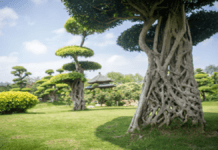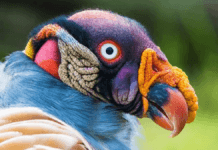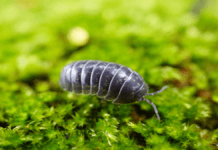Have you ever seen how a single plant can seem to be noticeably exclusive depending on the place it grows? That’s now not simply a fluke of nature—it’s a survival strategy. Beyond the constant code of genetics, plants have a brilliant capacity to roll with the punches that nature throws at them.
This secret weapon is acknowledged as phenotypic plasticity. It’s a bit like a plant’s built-in toolkit for dealing with life’s ups and downs. When the going receives tough, plants cannot simply up and leave. Instead, they regulate their traits—like the color of their leaves, the timing of their bloom, or the depth of their roots—to higher in shape with their altering environment. This top-notch flexibility is not simply a cool celebration trick; it is a necessary chapter in the story of how flora lives to tell the tale and even thrive when the policies of the sport hold changing.

1. Understanding Phenotypic Plasticity
Think of phenotypic plasticity like a secret agent’s disguise. It’s a plant’s way of changing up its look or function to deal with different environments. Instead of a hat and sunglasses, though, plants might grow thicker leaves or deeper roots.
1.1 Delve deeper into the mechanisms of phenotypic plasticity
So, how do plants pull off this quick-change act? It all starts with a nudge from their surroundings—like a change in light, a nibble from an insect, or a drought. These cues talk directly to the plant’s genes. The genes listen and then send out new orders: “Make those leaves spikier!” or “Time to bloom early!” This isn’t a complete makeover; it’s more like adjusting to stay comfy.
1.2 Different types of phenotypic plasticity
We’ve got a few different ways plants can switch things up. Morphological changes are all about shape and size—think of a cactus getting plumper to store more water. Physiological changes are the behind-the-scenes tweaks to how a plant works inside, like altering water use during a drought. And behavioral adaptations? Yes, plants have behaviors, like closing up their flowers when pollinators are not around. It’s all about staying alive and kicking.
2. Examples of Phenotypic Plasticity in Plants
Nature’s got a knack for keeping us on our toes, and plants are no exception. They’ve got this super skill called phenotypic plasticity that lets them tweak their game plan to handle whatever comes their way. Plants are the ultimate survivalists, constantly adapting to their ever-changing environments. Here are a few ways they use phenotypic plasticity to keep thriving. Let’s chat about how they do just that.
2.1. Shade Lovers Get Sun-Savvy
You know those plants that chill in the shade? When they end up in the sun, they don’t just pack it in. They change up their leaves to catch more light. Bigger, thinner, and broader leaves mean more sunshine soaking without moving an inch. It’s like opening an umbrella in the rain but in reverse.
2.2. Roots Go Deep When Water’s Scarce
When the soil’s as dry as a week-old loaf of bread, some plants get their roots to dive deep in search of a drink. If water’s scarce up top, they’ll grow their roots longer and spread them out like searching fingers. They’re not just waiting for rain; they’re going after what they need.
2.3. Plants Get Tough When Critters Get Munchy
Ever touched a nettle and regretted it? That’s phenotypic plasticity in action! When bugs or animals start nibbling, plants can whip up a chemical cocktail that’s less tasty and more trouble. Some might get bitter, others turn toxic, and a few even send out signals to call in the bug cavalry. It’s their way of saying, “Pick on someone your own size!”
3. The Role of Phenotypic Plasticity in Evolution
Ever wonder how plants can stick around for millions of years? It’s not just luck—it’s a cool thing called phenotypic plasticity. It’s like the secret superpower that lets them keep up with the times and even gives them a leg up in the survival game.
3.1 How Phenotypic Plasticity Leads to Adaptation and Speciation
Here’s the scoop: when plants face new challenges, they don’t just sit there; they adapt. And this isn’t a one-and-done deal. They can keep tweaking these changes over time. Let’s say a plant starts growing longer roots to find water during a dry spell. If this new trait helps the plant survive better, it keeps on using it. Over a long, long time, these changes can add up. We end up with a whole new species that’s better suited to its home. It’s like how you learn to ride a bike or skate. Once you get it, you never forget, and you just keep getting better.
3.2 Plastic Traits Becoming Part of the Plant’s DNA
Here’s where it gets really interesting. If a plant’s new trait gives it an edge—like being able to find more water or scare off bugs—this trait can stick around. It’s like passing down a family recipe that makes everyone say ‘wow.’ The plants with these awesome traits have more little plant babies, and those babies have the same cool features. Over time, this trait becomes part of the plant’s genetic lineup. It’s nature’s way of keeping the best of the bunch.
4. Real-world Implications
The realistic purposes of appreciating phenotypic plasticity are widespread and varied, spanning several fields that have an effect on our everyday lives and the future of our planet.
4.1. Broad Applications Across Fields
A deep comprehension of phenotypic plasticity can revolutionize how we strategy organic lookup and environmental management. This understanding is a cornerstone in creating sustainable practices and fostering biodiversity.
4.2. Transforming Agriculture
In agriculture, leveraging phenotypic plasticity can lead to extra resilient crop sorts that are successful in withstanding stressors such as pests, diseases, and climatic extremes. This ought to result in greater yield balance and decreased reliance on chemical interventions, paving the way for greater sustainable farming methods.
4.3. Conservation and Climate Change Mitigation
Understanding how flowers adapt to their altering surroundings is essential for conservation efforts. As we face fast local weather alternate and habitat modification, harnessing phenotypic plasticity may want to be instrumental in creating techniques to maintain endangered species and ecosystems. It gives a blueprint for fostering plant resilience in an altering world.
Conclusion
This superpower of trade offers to plant a battle risk in a world full of surprises. It’s like having an all-access skip to the excellent survival strategies, and it is all-natural. So the next time you see a plant, remember that it is now not simply sitting there. It’s actively figuring out how to overcome its little piece of the world. And it really is the story of how plant life uses phenotypic plasticity no longer simply to live to tell the tale but additionally to genuinely thrive. They exhibit to us that being adaptable is the secret to making it large in this wild world we all share.



















